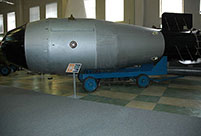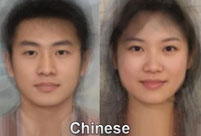 Lingerie show at 2014 Miss China
Lingerie show at 2014 Miss China
 Fan Bingbing's "Queen style" in new play
Fan Bingbing's "Queen style" in new play
 Top 10 pricey destinations for studying abroad
Top 10 pricey destinations for studying abroad
 Couple chase tornados to create perfect storm photos
Couple chase tornados to create perfect storm photos
 J-10 fighters show aerobatic stunts in smog-free sky
J-10 fighters show aerobatic stunts in smog-free sky
 Top 10 charming female soldiers of the PLA
Top 10 charming female soldiers of the PLA
 Charming contestants of Shanghai Int’l Model Contest
Charming contestants of Shanghai Int’l Model Contest
 Most amazing chi-pao beauties
Most amazing chi-pao beauties
 7 deadly animal attacks
7 deadly animal attacks
 Picturesque autumn scenery of Hongshan Army Horse Ranch
Picturesque autumn scenery of Hongshan Army Horse Ranch
BEIJING, Oct. 24 -- China's spacecraft testing technology for the Chang'e-5 return lunar mission, trimmed its orbit on Friday afternoon.
This was the first modification during a journey scheduled to take about eight days, according to a statement from the State Administration of Science, Technology and Industry for National Defense.
The modification was necessary because the unmanned spacecraft is affected by external factors during the transfer from a terrestrial orbit to a lunar orbit, according to the statement. Updated software allows monitors in Beijing to spot glitches during the journey immediately and respond to them.
The orbiter was launched by a Long March-3C rocket from the Xichang Satellite Launch Center in southwest China's Sichuan Province on early Friday.
Developed by China Aerospace Science and Technology Corporation, the spacecraft will fly around the moon half a circle and return to Earth.
The mission is to collect data and validate re-entry technology such as guidance, navigation and control systems, and the heat shield in anticipation of a moon landing by Chang'e-5, which will collect samples and return to Earth, probably in 2017.
It is the first time China has conducted a test involving a half-orbit around the moon at a height of 380,000 kilometers before having the spacecraft return to Earth.
The test orbiter is a precursor to the last phase of a three-step moon probe project, a lunar sample return mission.
China carried out Chang'e-1 and Chang'e-2 missions in 2007 and 2010, respectively, capping the orbital phase.
The ongoing second phase saw Chang'e-3 with the country's first moon rover, Yutu, on board succeed in soft landing on the moon in December 2013. Chang'e-4 is the backup probe of Chang'e-3 and will help pave the way for future probes.
 U.S. air force transport planes row up on base
U.S. air force transport planes row up on base Fast and Furious: Post-85s female pilots and their mission
Fast and Furious: Post-85s female pilots and their mission Century-old public bath closes door in Beijing
Century-old public bath closes door in Beijing Shocking! Photos of Chinese fighters revealed
Shocking! Photos of Chinese fighters revealed World's most intimidating nuclear weapons
World's most intimidating nuclear weapons Standard faces for each countries in the world
Standard faces for each countries in the world Netizens fall in love with champion swimmer Ning Zetao
Netizens fall in love with champion swimmer Ning Zetao Vibrant 21-year-old and her own Cheongsam brand
Vibrant 21-year-old and her own Cheongsam brand Fashion style: Faye Wong vs Cecilia Cheung
Fashion style: Faye Wong vs Cecilia Cheung Top 10 most dangerous jobs in the world
Top 10 most dangerous jobs in the world  Top 10 fifth generation jet fighters in the world
Top 10 fifth generation jet fighters in the world Top 10 Chinese goddesses
Top 10 Chinese goddesses  Top 20 hottest women in the world in 2014
Top 20 hottest women in the world in 2014 Top 10 pure beauties in showbiz
Top 10 pure beauties in showbiz  Top 10 world's highest-paid models 2014
Top 10 world's highest-paid models 2014 The most gorgeous Chinese women
The most gorgeous Chinese women Top 10 most handsome faces in Asia
Top 10 most handsome faces in AsiaDay|Week|Month